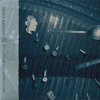 Burn is superior in every way to Coleclough's other collaboration from 2008. Andrew Liles' sometimes campy, often spooky penchant for drafting other-worldly drones pairs perfectly with Jonathan's texture-rich audio and their flirtation with musique concrète is both entrancing and fun. With some of the samples apparently being drawn from Coleclough and Liles' 2008 Brainwaves set, Burn has the added bonus of featuring sounds from one of the most entertaining experimental shows I have ever seen.
Burn is superior in every way to Coleclough's other collaboration from 2008. Andrew Liles' sometimes campy, often spooky penchant for drafting other-worldly drones pairs perfectly with Jonathan's texture-rich audio and their flirtation with musique concrète is both entrancing and fun. With some of the samples apparently being drawn from Coleclough and Liles' 2008 Brainwaves set, Burn has the added bonus of featuring sounds from one of the most entertaining experimental shows I have ever seen.
Coleclough's performance at Brainwaves 2008 sticks out in my mind more than almost any other show from that year. In fact, his use of the now infamous "torch pen" is one of the most ingenious and entertaining things I've ever seen from any performer, avant-garde or otherwise. The apparatus was simple: a couple of contact mics were affixed to a plate of glass, which was suspended from a coat hanger. With Liles controlling sound and generating waves of drone, Coleclough proceeded to take a small blow-torch pen to the glass, creating cracks that were then picked up by the mics and transformed into crystalline shards of noise. It was a transfixing and beautiful thing to see and hear, and it made musique concrète more immediate and fun for me than it had ever been before. Whether or not someone was there to witness that show might affect how much they enjoy certain parts of Burn, but this album stands on its own for many other reasons. Jonathan's clever use of fire, glass, and microphones only shows up on one song ("Blackburn") and it sounds excellent even without the opportunity to watch it happen live. And Liles' input shouldn't go ignored. His signature is pretty obvious through the record, whether he's editing or inserting some ghostly audio into the mix. If it weren't for his subtle hand, Burn would be a flatter and far less engaging disc.
The album gets off to a slow start, though, with "Sunburn" dragging a little bit before "Blackburn" kicks the record into high gear. Like Bad Light, Burn features a good deal of unprocessed audio. But, it is done to much better effect this time around, in part because Liles provides an anchor for Coleclough's wandering. Bells, chimes, pianos, strings, guitar, prepared piano, and other sundry instruments all show up on various songs, but this time they're integrated into the flow of sound more completely. In fact, "Heartburn" features a brief, but powerful guitar interlude that melts perfectly into the surrounding boil of clunking metal and detuned violins. This success probably has a lot to do with Liles' penchant for combining and arranging odd sounds: he finds absolutely no difficulty in blending toys, electronic gizmos, seriously demented noise, and a good bit of humor into his music. Coleclough's expanded musical palette obviously benefits from this ability. It keeps the record from being too haphazard and it lends a lot of diversity to a kind of music that can become stale and uninteresting pretty easily. The length of each track on Burn contributes to its enjoy-ability, too: only two songs exceed the 12-minute mark, and only one ventures off into 20-minute territory. By keeping things brief in some places, Coleclough and Liles make Burn sharper and harder-hitting, which means a lot for a record that features three and four-minute fade-ins, lots of slowly developing themes, and other sonic minutiae.
Fans looking for a document of the Coleclough and Liles Braiwaves performance will be happy to have Burn, but the album offers up a lot more than memories of their live collaboration. Every song is like an extention of that performance, each of which borrows from and expands upon the original conceit. With the added benefit of some studio trickery and a little refinement, their combined effort sounds even better.
samples:
Read More

